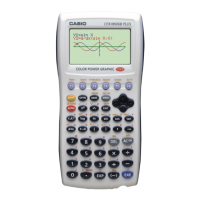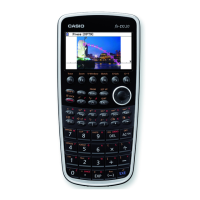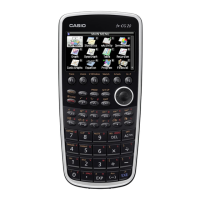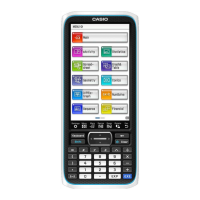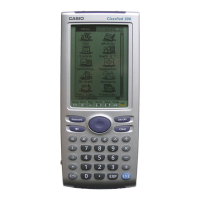32
Chapter 3: Commands and Programming
Sample Operation Using Receive(List)
The following program fetches sampled data items and assigns them to CFX-
9850G list variables.
Receive(List 1)
Receive(List 2)
* The lowest numbered channel available in the following sequence:
RecTIME"CH1"CH2"CH3"SONIC"DIG IN
Fetching Data Using Receive(Matrix)
Transferring data to a matrix is a bit different from other data transfer opera-
tions. The Receive(Mat n) command causes up to 255 sample data items for
all active channels (or RecTIME) to be returned to the matrix specified by the
command. The number of data items transferred to the calculator depends
on the amount of memory available on the calculator. The number of rows in
the matrix matches the number of active channels (RecTIME is counted as
one channel when it is selected) where the data (including post-processed
data) is stored.
Sample Operation Using Receive(Matrix)
The following program fetches CH1 and CH2 sampled data and assigns them
to a CFX-9850G matrix.
Receive(Mat A) Fetches up to 255 data items from each active chan-
nel (CH1 and CH2 in this example), and stores them
in matrix Mat A, whose dimensions are 2 $ 255.
CH1 data is stored in Row 1, while CH2 data is
stored in Row 2.
Using Receive(List) to Fetch Sampled Data and
Post-Processing Data
This example provided in this section performs the following calculations.
• First derivative of data sampled by CH1
• Second derivative of data sampled by SONIC channel
The following data is transferred to the CFX-9850G.
• All CH1 data (raw sample data and first derivative)
• Post-processed SONIC channel data (second derivative only)
In this example, a total of 300 samples are taken with CH1 and the SONIC
channel, and all other channels are inactive. Post-processing is turned on,
Fetches up to 255 data items from the lowest num-
bered channel*, and stores them in List 1.
Fetches up to 255 data items starting from the next
active channel, and stores them in List 2.
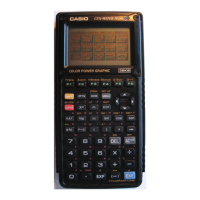
